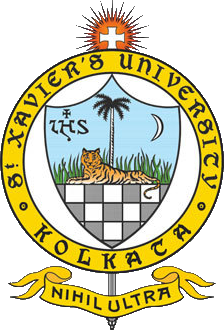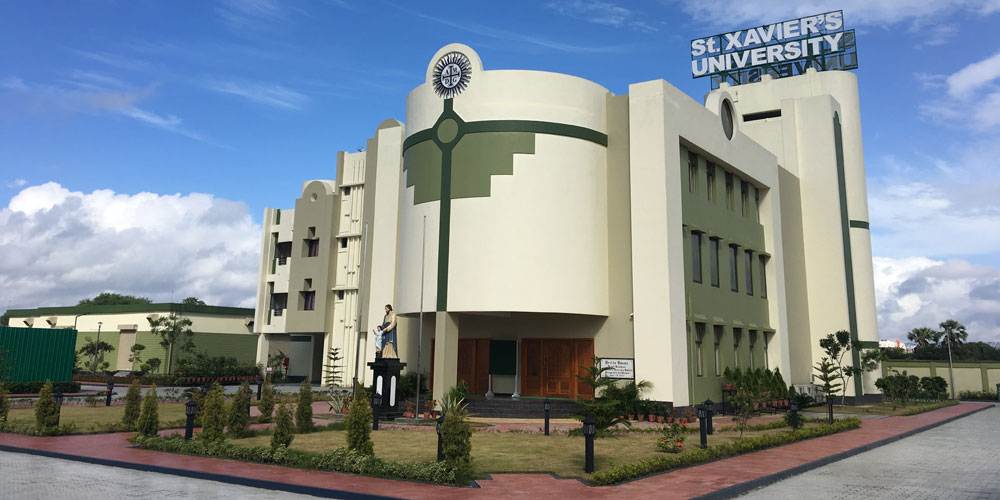Innovation from Emerging Markets (Record no. 6178)
[ view plain ]
| 000 -LEADER | |
|---|---|
| fixed length control field | 09913nam a22001937a 4500 |
| 005 - DATE & TIME | |
| control field | 20220120122842.0 |
| 008 - FIXED-LENGTH DATA ELEMENTS--GENERAL INFORMATION | |
| fixed length control field | 220120b |||||||| |||| 00| 0 eng d |
| 020 ## - ISBN | |
| International Standard Book Number | 9781108486866 |
| Price | 8899 |
| 040 ## - CATALOGING SOURCE | |
| Original cataloging agency | S.X.U.K |
| 041 ## - Language | |
| Language | English |
| 082 ## - DDC NUMBER | |
| Classification number | 338.064091724 |
| Book Number | CAH(INN) |
| 100 ## - MAIN ENTRY--PERSONAL NAME | |
| Personal name | Cahen, Fernanda Ribeiro |
| 245 ## - TITLE STATEMENT | |
| Title | Innovation from Emerging Markets |
| Sub Title | : from copycats to leaders |
| Statement of responsibility | by Fernanda Ribeiro. Cahen |
| 260 ## - PUBLICATION, DISTRIBUTION, ETC. (IMPRINT) | |
| Place of publication, distribution, etc | NY |
| Name of publisher, distributor, etc | Cambridge |
| Date of publication, distribution, etc | 2021 |
| 300 ## - PHYSICAL DESCRIPTION | |
| Pages | 388 p. |
| 500 ## - GENERAL NOTE | |
| General note | Cover --<br/>Half-title --<br/>Title page --<br/>Copyright information --<br/>Contents --<br/>List of Figures --<br/>List of Tables --<br/>List of Boxes --<br/>List of Contributors --<br/>Foreword --<br/>Acknowledgments --<br/>Introduction --<br/>I.1 Book Structure --<br/>References --<br/>1 A Framework for Innovation in Emerging Markets --<br/>1.1 Innovation: The Sine Qua Non of Growth and Development --<br/>1.1.1 The National System of Innovation (NSI) --<br/>1.1.2 Measuring Innovation Performance --<br/>1.2 An Innovation Framework for Emerging Markets --<br/>1.3 Part I: Drivers of Innovation in Emerging Markets --<br/>1.3.1 Institutional Contexts and Governments --<br/>1.3.2 Industry- and Firm-Level Drivers --<br/>1.3.3 Society and Social Demands --<br/>1.4 Part II: Types of Innovation in Emerging Markets --<br/>1.4.1 Product and Process Innovation --<br/>1.4.2 Business Model Innovation --<br/>1.4.3 Organizational Innovation --<br/>1.4.4 Frugal Innovation --<br/>1.4.5 Reverse Innovation --<br/>1.4.6 Social Innovation --<br/>1.5 Part III: Innovation Outcomes in Emerging Markets --<br/>1.6 From Copycats to Leaders --<br/>References --<br/>Part I Drivers of Innovation in Emerging Markets --<br/>2 The Breadth and Extent of Chinese Innovation as Documented in the 2017 Corporate Innovation Survey --<br/>2.1 Introduction --<br/>2.2 Context of Chinese Enterprises' Innovation Activities --<br/>2.3 Chinese Enterprises' Innovation by Industry --<br/>2.3.1 Overall Situation --<br/>2.3.2 Innovation in Manufacturing --<br/>2.3.3 Innovation in the Service Industry --<br/>2.4 Chinese Enterprises' Technology Innovation Strategies --<br/>2.4.1 Independent Development of Technology Innovation Predominates among Chinese Enterprises --<br/>2.4.2 The Most Important Expenditures for Corporate Innovation Are Machinery, Equipment, Software, and Internal Research and Development (R& --<br/>D) --<br/>2.4.3 The Main External Sources of Information for Corporate Innovation Are Clients and Intra-Industry Enterprises. 2.4.4 Upstream and Downstream Subjects Are the Main Cooperative Partners of Enterprises --<br/>2.5 Factors Driving Innovation from the Perspective of Entrepreneurs --<br/>2.6 Results and Impact of Chinese Enterprises' Innovation --<br/>2.6.1 New Product Output --<br/>2.6.2 Technological Capabilities --<br/>2.6.3 Promoting Economic and Social Development --<br/>2.7 Conclusions --<br/>References --<br/>3 The Rise of an Innovation Tiger: The Catch-Up of the Indian National System of Innovation --<br/>3.1 Introduction --<br/>3.2 Innovation Systems Catch-Up --<br/>3.2.1 Innovation Systems --<br/>3.2.2 Innovation Systems in Developing Countries and Their Catch-Up --<br/>3.3 The Indian NSI --<br/>3.3.1 India's Policy Changes and Innovation --<br/>3.3.2 The Indian Wind Turbine Industry --<br/>3.3.3 The Indian Pharmaceutical Industry --<br/>3.3.4 The Indian Auto Components Industry --<br/>3.4 Concluding Discussion --<br/>3.4.1 Implications for Policy and Practice --<br/>References --<br/>4 Exploring the Role of Government Involvement in Innovation: The Case of State Grid Corporation of China (SGCC) and INVAP --<br/>4.1 Introduction --<br/>4.2 State Grid Corporation of China (SGCC) --<br/>4.2.1 SGCC, a Major Chinese State-Owned Company --<br/>4.2.2 Electricity as a Technology and Innovation Enabler --<br/>4.2.3 Beyond China, Global Energy Interconnection (GEI) --<br/>4.3 INVAP: The Argentine Jewel --<br/>4.3.1 INVAP Innovation --<br/>4.3.2 Governance --<br/>4.4 INVAP, SGCC, and Beyond --<br/>4.5 Can Emerging-Market SOEs Be Leading Innovators? --<br/>References --<br/>5 Digital Companies Driving Business Model Innovation in Emerging Markets: The Cases of Alibaba, Flipkart, Jumia, and Mercado Libre --<br/>5.1 A Look at the World of Retail E-Commerce --<br/>5.2 Alibaba's Rise to Become the World's Largest Retail and E-Commerce Company --<br/>5.3 Flipkart and the Race to the Top of Indian E-Commerce --<br/>5.3.1 Flipkart Innovates with Payment Methods --<br/>5.3.2 E-Commerce Competitors Come to India. 5.3.3 Bumps on the Road: The Need for More Customization --<br/>5.3.4 Moving Forward: Pressure from Amazon Will Lead to More Consolidation --<br/>5.4 Africa's First Unicorn, Jumia --<br/>5.4.1 E-Commerce Challenges in Africa --<br/>5.4.2 Customer-Focused Model Helps Jumia Grow --<br/>5.4.3 Moving Ahead in Africa --<br/>5.5 Mercado Libre, the Latin American Leader --<br/>5.5.1 Adjusting and Seeking New Business Opportunities --<br/>5.5.2 Current Challenges and Perspectives Ahead --<br/>5.6 The New E-Commerce Leaders from Emerging Markets --<br/>References --<br/>6 Entrepreneurial Ecosystems and Innovation in the Balkans --<br/>6.1 Introduction --<br/>6.2 How Entrepreneurial Ecosystems Relate to National Systems of Innovation --<br/>6.2.1 Institutions, Infrastructure, and Government Programs --<br/>6.2.2 R& --<br/>D Capabilities, Transfer Capabilities, and Universities --<br/>6.2.3 Business Sophistication and Entrepreneurial Culture --<br/>6.3 Data and Method: Why the Balkans? --<br/>6.4 Brief Overview of the Entrepreneurial Ecosystems in the Balkans --<br/>6.4.1 Institutions, Infrastructure, and Government Programs --<br/>6.4.2 R& --<br/>D Capabilities, Transfer Capabilities, and Universities --<br/>6.4.3 Business Sophistication and Entrepreneurial Culture --<br/>6.5 Conclusions --<br/>References --<br/>Part II Types of Innovation in Emerging Markets --<br/>7 The Political Economy of China's R& --<br/>D Internationalization: Policy-Led Innovation and Changes in China's Growth Model --<br/>7.1 Introduction: Policies Matter in China's Development of Global Innovation --<br/>7.2 A Historical Review of Global Chinese R& --<br/>D Practices --<br/>7.3 The Necessity of Transforming China's Growth Model --<br/>7.3.1 The Shift of Growth Model --<br/>7.3.2 ''Becoming Strong,'' Domestically and Internationally --<br/>7.4 Domestic Upgrading: ''Indigenous Innovation'' and ''Made in China 2025'' --<br/>7.4.1 The ''Indigenous Innovation'' Drive --<br/>7.4.2 The ''Made in China 2025'' Program. 7.5 Outward Drive: ''Going Out'' and the ''Belt and Road Initiative'' --<br/>7.5.1 The ''Going Out'' Strategy --<br/>7.5.2 The Belt and Road Initiative (BRI) --<br/>7.6 Chinese R& --<br/>D Internationalization at the Firm Level --<br/>7.6.1 A Review of Pertinent Literature --<br/>7.6.2 Scale and Extent of Chinese R& --<br/>D Internationalization --<br/>7.6.3 SOE versus POE Internationalization --<br/>7.7 Counterreaction: Investment Screening Reform in the EU and the United States --<br/>7.8 Conclusion --<br/>References --<br/>8 Emerging Pharmaceutical Companies from China, India, and Brazil: From Generic Drugs to Innovation Strategies --<br/>8.1 Introduction --<br/>8.2 Pharmaceutical Innovation and the New Role of Emerging Markets --<br/>8.2.1 From Copycats to Leaders in the Pharmaceutical Value Chain --<br/>8.3 Pharmaceutical Industry in China, India, and Brazil --<br/>8.3.1 Chinese Pharmaceutical Market --<br/>8.3.1.1 Players, Competition, and Capabilities in the Market --<br/>8.3.1.2 Key Institutional Changes and Innovation --<br/>8.3.2 Indian Pharmaceutical Market --<br/>8.3.2.1 Players, Competition, and Capabilities in the Market --<br/>8.3.2.2 Key Institutional Changes and Innovation --<br/>8.3.3 Brazilian Pharmaceutical Market --<br/>8.3.3.1 Players, Competition, and Capabilities in the Market --<br/>8.3.3.2 Key Institutional Changes and Innovation --<br/>8.4 Cases --<br/>8.4.1 Jiangsu Hengrui Medicine --<br/>8.4.2 Sun Pharma --<br/>8.4.3 Eurofarma --<br/>8.5 Conclusions --<br/>References --<br/>9 Reverse Innovation and the Role of Local Partners in Emerging Markets: The Experience of Foreign Subsidiaries in Brazil --<br/>9.1 Introduction --<br/>9.2 Reverse Innovation in EMs --<br/>9.3 Methodology --<br/>9.4 Results --<br/>9.5 Analysis of Results --<br/>9.6 Cases --<br/>9.6.1 Case 1: 3M Brazil and Natura --<br/>9.6.2 Case 2: Visa and Suplicy Cafés --<br/>9.6.3 Case 3: Orisol and Artecola --<br/>9.7 Conclusion --<br/>References. 10 Innovation Based on Value Co-creation through Employees at HCL Technologies --<br/>10.1 Introduction --<br/>10.2 The Value Co-creation Framework --<br/>10.3 Methods --<br/>10.4 HCL Technologies --<br/>10.4.1 The EFCS Management Philosophy --<br/>10.4.2 Employee Well-Being --<br/>10.4.3 Employee Empowerment --<br/>10.4.4 Innovation through Value Co-creation --<br/>10.5 Discussion and Conclusions --<br/>References --<br/>11 Frugal Innovation in Brazilian Multinationals --<br/>11.1 Introduction --<br/>11.2 Theoretical Background --<br/>11.2.1 Frugal Innovation --<br/>11.2.2 Aligning the Catch-up Strategy with Frugal Innovation --<br/>11.3 Method --<br/>11.4 Cases of Frugal Innovation in Brazilian Companies --<br/>11.4.1 Natura: Frugal Innovation Pulled by Sustainable Innovation Strategy --<br/>11.4.2 Nubank: Frugal Innovation Pulled by High Technology Catch-up Strategy --<br/>11.5 Survey of Brazilian Multinationals --<br/>11.6 Conclusion --<br/>Appendix --<br/>References --<br/>12 Innovation in War and Peace: How Colombian Conflict and Postconflict Triggered Military and Business Model Innovation --<br/>12.1 Introduction --<br/>12.2 The Colombian Conflict in Brief --<br/>12.3 Managerial Innovation in Warfare --<br/>12.4 Peacebuilding and Business Model Innovation --<br/>12.4.1 Bancolombia: Exploring Business Model Innovation --<br/>12.4.2 Crepes & --<br/>Waffles: Interdependency --<br/>12.4.3 Postobón and CSR --<br/>12.5 Conclusion and Implications --<br/>References --<br/>Part III Innovation Outcomes in Emerging Markets --<br/>13 Evaluating Outcomes of Innovation in Emerging Markets --<br/>13.1 Measuring Countries' Innovation Performance --<br/>13.2 Emerging Countries in the Global Innovation Index (GII) --<br/>13.3 Innovation Capabilities in Emerging Multinationals --<br/>13.4 Going Beyond Traditional Indicators in Emerging Markets --<br/>Appendix --<br/>References --<br/>Conclusions: Emerging Markets Becoming Innovation Leaders --<br/>Index. |
| 650 ## - Subject | |
| Subject | PHD |
| 942 ## - ADDED ENTRY ELEMENTS (KOHA) | |
| Koha item type | Phd Economics |
| Withdrawn status | Lost status | Source of classification or shelving scheme | Damaged status | Not for loan | Koha collection | Location (home branch) | Sublocation or collection (holding branch) | Shelving location | Date acquired | Source of acquisition | Cost, normal purchase price | Koha full call number | Barcode (Accession No.) | Koha date last seen | Copy Number | Price effective from | Koha item type |
|---|---|---|---|---|---|---|---|---|---|---|---|---|---|---|---|---|---|
| Dewey Decimal Classification | Not For Loan | Reference | SXU PhD Library | SXU PhD Library | Reference Section | 01/17/2022 | Katha O Kahini | 8899.00 | R 338.064091724 CAH(INN) | 457 | 01/20/2022 | 457 | 01/20/2022 | Reference PhD Management |

